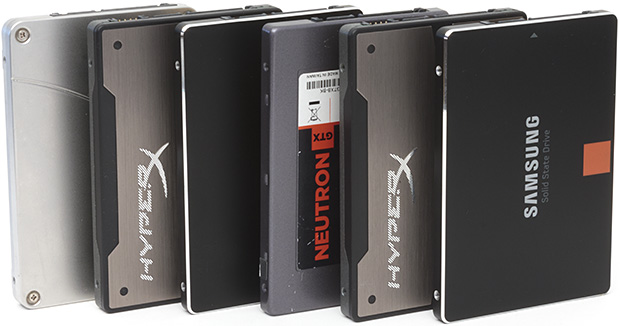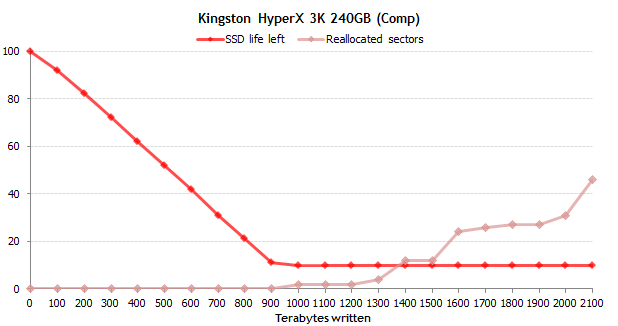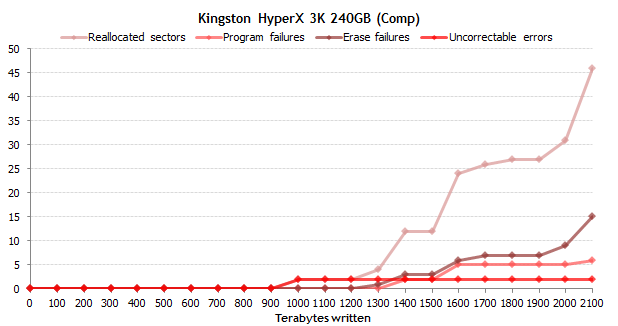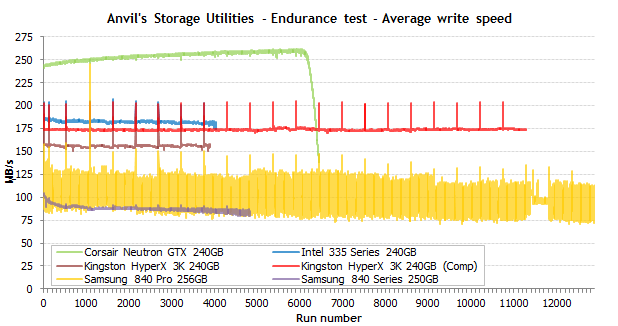The most reliable SSD: the results of the experiment lasting one and a half years

Modern SSD drives are fairly reliable, and given the fact that the price of 1 GB (in dollars) is gradually falling, then using SSD is in many cases even more rational than working with HDD. But which SSD to choose?
A year and a half ago, a Tech Report journalist decided to conduct an experiment to identify the most reliable SSDs. He took six models of drives: Corsair Neutron GTX, Intel 335 Series, Kingston HyperX 3K, Samsung 840, Samsung 840 Pro, and put all six on a cyclic read / write process. The memory capacity of each drive was 240-256 GB, depending on the model.
Immediately it should be said that all six models successfully withstood the load declared by the manufacturer. Moreover, most models survived more read / write cycles than those stated by the developers.
')

Nevertheless, 4 out of 6 models surrendered before reaching the volume of 1 PB of information “pumped through” through the disk. But 2 models from those that participated in this attraction of “iron death” (Kingston and Samsung 840 Pro) survived even 2 PBs, and only then refused. Of course, a sample of 6 SSDs cannot serve as an indicator of work for all SSDs without exception, but this sample does have some representativeness. The procedure for cyclic read-write is also not an ideal indicator, because drives can fail for a variety of reasons. But the test results are very interesting.
One of the conclusions: manufacturers are quite sensitive to the question of choosing the limit of their drives - as mentioned above, all SSDs have sustained the set limit on the amount of recorded information.
As for the models themselves, the first to fail is the Intel 335 Series . The SSD of this model has one feature - they stop working as soon as bad sectors appear. Immediately after this, the drive enters the reading mode, and then completely turns into a “brick”. If it were not for the instruction “stop at failure”, it is possible that the SSD would have worked longer. The problems started with the disc after passing the 700 TB mark. The information on the disk remained readable until the time of the reboot, after which the disk turned into a piece of iron.
Samsung 840 Series successfully reached the level of 800 TB, but began to show a large number of errors, starting with 900 TB, and refused without warning, not reaching the petabyte.
The next Kingston HyperX 3K refused - the model also has an instruction to stop working when a number of bad sectors appear. By the end of the work, the device began to issue notifications of problems, making it possible to understand that the end is near. After marking 728 TB, the drive went into read mode, and after a reboot, it stopped responding.
Corsair Neutron GTX was the next victim, passing the mark of 1.1 PB. But the drive already had thousands of bad sectors, the device began to issue a large number of warnings about problems. Even after another 100 TB disk will allow you to record data. But after the next reboot, the device is no longer even detected by the system.
There are only two Kingston and Samsung 840 Pro models that heroically continued to work, reaching a mark of even 2 PB.

Kingston Hyper X uses data compression whenever possible, but the tester began writing incompressible data for test purity. For this, the program Anvil's Storage Utilities was used, which serves to perform read-write tests.



The disc showed good results, although in the interval between 900 TB and 1 PB, uncorrectable errors have already occurred, plus bad sectors. There were only two errors, but this is still a problem. After the disk failed 2.1 PB, it was no longer detected by the system after the reboot.

The last fallen iron soldier in this battle was the Samsung 840 Pro


The drive passed the 2.1 PB mark and refused.
Well, there is no happy end, everyone died, unfortunately. But it couldn’t have happened otherwise - in the sense of the test, wait for the failure of all SSD models that participated in it.
Performance
The tester conducted a series of tests to determine the performance of the models that participated in the test. Here are the results:





As you can see, a lot of work has been done, which allows us to judge the reliability and stability of modern drives. It is worth repeating that neither the sample nor the test carried out are as representative as possible, but certain conclusions can be made.
Source: https://habr.com/ru/post/377301/
All Articles